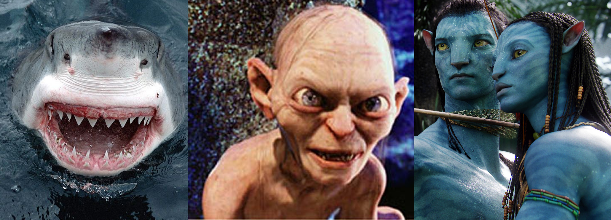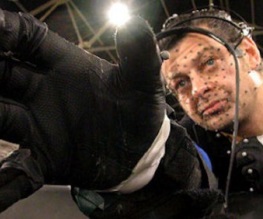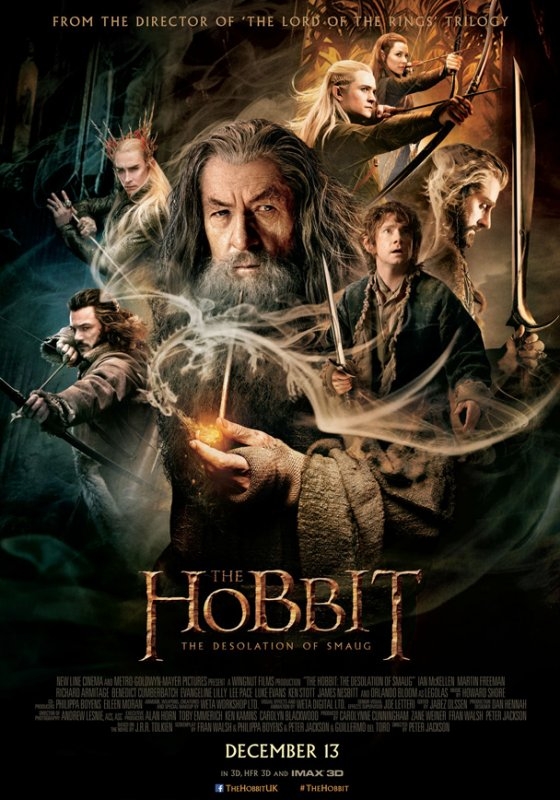CGI shelf-life: How special are today’s special effects?

It’s not uncommon for directors and actors to have their tiffs, but by all accounts Steven Spielberg really hated the star of Jaws. Bruce the shark constantly broke down; the 2,000lb mechanical fish caused delays in shooting, was partially responsible for the film going massively over-budget, and was a constant thorn in the side of the entire cast and crew. But here’s the thing – sit down and watch a clip of Jaws. Okay, is it just me, or is that one seriously convincing damn “shark”?
This is a film made thirty-five years ago, and every time I watch Jaws pop up behind Brody (“You’re gonna need a bigger boat.”) I still experience a strong urge to avoid sea travel and idyllic coastal towns. Why is it so scary, and, more importantly, why does even a current-day viewing of a film made 35 years ago still cause such a visceral reaction? Simple: You believe the shark is real. Bruce the Shark wasn’t created on computer. Bruce the shark wasn’t an animation. Bruce the shark was an enormous, tangible, bulky piece of machinery that actually shared a space with the actors. In 1975, they built this fish-bot to look like a shark. In 2011, guess what, it still looks like a shark.
Now check out a clip from a much more recent movie that employed CGI trickery to substitute a principle character. Perhaps The Hulk from 2003:
At the time of the film’s release I was surprised at how cartoonish and out of place the Hulk appeared. Go back and look at clips from that film now, and the already mediocre effects have aged horribly.
First off, let’s briefly discuss the different types of effects we’re talking about here.
Mechanical effects are concerned with effects created on-set at the time of filming – this would include animatronics, scale-models, and other physical effects (including the sub-set of in-camera effects such as forced perspective, the use of filters, etc.) A visual effect is any effect achieved post-production, most commonly these days computer generated imagery.
The reason I picked Jaws as an example is two-fold; firstly, it shows how horribly complicated, time-consuming and troublesome mechanical effects can be, but it also demonstrates how timeless these effects are in comparison to modern-day CGI. Think about the last film you saw with great CGI special effects. Did I hear someone yell “Avatar”? Okay then, that film *has* pretty much become the go-to example when it comes to discussing CGI excellence. So, sitting there watching Avatar, if you’re anything like me, at one point during the film this thought popped into your head: “Wow, that’s really good CGI.” This is where the problem lies. Even the best, brightest, most current example of CGI trickery, for the most part, is still easily identifiable as being “Really good CGI.” There’s an awareness of the process that you simply don’t get with mechanical effects, if they’re done properly.
Avatar is a stunning looking movie, but as soon as you remove the real people from a shot, it looks like a cartoon, a beautiful cartoon, but a cartoon none the less. And having an actual human in the shot made the CGI characters look less convincing by comparison.
Let’s consider the cult horror classic An American Werewolf in London. Released in 1981, AAWiL was a special-effects revolution. The extremely realistic and disturbing man-to-wolfman transformation scenes are one of the main reasons AAWiL received such widespread critical acclaim, and why the movie gained its cult status. Rick Baker’s revolutionary make-up effects even earned him a well-deserved Oscar. Much like Jaws, watching American Werewolf today still inspires the same awe as it did upon its initial release. In fact, the TV show Being Human utilises many of the same physical effects for their werewolf transformation scenes, nearly thirty years later, and to great effect (pardon the pun.) And it’s not just werewolves that feel the benefits – anyone who fell in love with hideous killer-plant Audrey II in Little Shop Of Horrors (just me?) can attest to the fact that its plastic tendrils stand the test of time.
This brings up the other enormous benefit of physical effects versus CGI – it gives the actors on-set something to actually interact with. Compare Seymour’s conversations with Audrey II to Anakin Skywalker’s interactions with Watto in Star Wars: The Phantom Menace. Watching those scenes, the only thing that’s easy to believe is that Jake Lloyd is conversing with a tennis ball on a stick. While we’re on the subject of Star Wars, compare the original Mos Eisley Cantina scene, with the newer CGI “improved version” that George Lucas seems so keen to shove down our throats. Or even compare Jar-Jar to Chewie. One represents thousands of hours of expensive, intensive, CGI rendering, the other is a tall dude in a shaggy brown costume. Which will history remember? As if we even need to ask…
CGI gets even more ropey when trying to simulate good old humanity. In the first Spider-Man movie, Peter Parker jumping across rooftops looks animated and inhuman. There’s a fight scene in Blade II that looks like a Saturday morning cartoon, and in the final scenes of The Mummy Returns, The Rock appears as the half-beast Scorpion King vaguely resembling a shiny, rigid action figure of himself. Buzz Lightyear looks more human. No matter how hard we try, humans still appear vaguely creepy, and their faces resemble death masks (Jeff Bridge’s terrifying Clu in Tron: Legacy, anyone?). Creatures, backgrounds, effects atmospheric effects; for this CGI is perfectly suited, but replacing a person… it rarely works.
There are, of course, exceptions. Peter Jackson’s Lord of the Rings trilogy is a masterful example of how CGI can be an irreplaceable asset. Huge battle scenes, the Nasgul, the Balrog, they all look amazing, and couldn’t have been achieved without CGI. Gollum was a massive step forward, but I think that Gollum’s successful creation owes much to Jackson’s use of a combination of physical and digital effects. Though Gollum is entirely CGI, his performance was created using hours of MoCap (motion capture) of a real actor. What’s more, Andy Serkis, the voice and MoCap model for Gollum, was on-set during Gollum’s scenes, and interacted physically with the other actors.
There’s a certain coldness and detachment with CGI effects. Of course, as technology develops, our ability to pick out and critique CGI will undoubtedly diminish; Elvis will make another movie, Jaws 13 will have a convincing computer generated shark, and CGI digital effects will become undetectable aside the physical actors.
Then again, when CGI has developed to that degree, perhaps we won’t even need actors any more. We can have a CGI actor, acting against a CGI creature, against a CGI background. Every film will be a real-world Toy Story, and another profession will be negated. Voice actors will be the only actors still employed in Hollywood (until Apple creates a program to perfectly synthesise the human voice.) And it’s not only actors; set builders, miniatures, puppets, in-camera effects, bigatures, make-up artists: masterful technicians in the vein of Rick Baker, Stan Winston, and Rob Bottin could soon find themselves redundant. Because why employ an actual human being when they can easily be substituted by a green screen, an Apple Mac video editing suite, and a tennis ball on a stick?
By Adam Dolan






This has already happened. Go to Japan, they literally have famous CGI anime pop stars there. These pop stars have actual followings and it does live shows in the form of a hologram (like the Tupac one) and thousands of Japanese people show up for it.